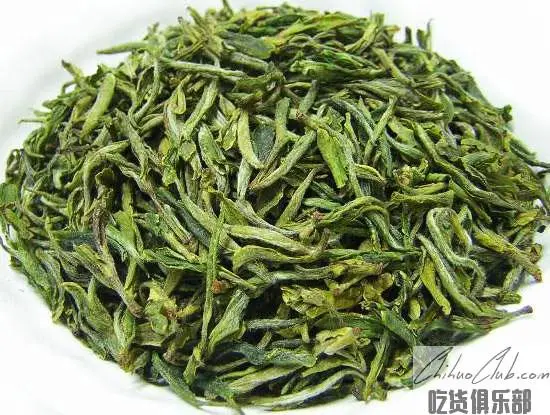
Huangshan Maofeng
-
Update date::
-
Date of protection::
-
Protected range:The protection scope of Huangshan Maofeng Tea is based on the geographical scope proposed by the Huangshan Municipal People's Government of Anhui Province for requesting the listing of Huangshan City of Anhui Province as the origin of Huangshan Maofeng Tea (Huang Zheng Secret [2002] No. 43). It is a tea township in the administrative area of Huangshan City, including Quxi District, Huangshan District, Huizhou District, Qixian County, Xiuning County, Qimen County and Qixian County.
-
Category:
Huangshan Maofeng is a traditional Han tea, one of China's top ten famous teas, belonging to green tea. Produced in the Huangshan (Huizhou) area of Anhui Province, it is also known as Huicha. Created by Xieyu Dacha Zhuang in the Guangxu Period of the Qing Dynasty. Every year, Qingming Guyu selects the first-time fat and tender shoots of the fine-bred tea tree “Huangshan species” and “Huangshan big-leaf species”. The tea is slightly rolled, shaped like a tongue, greenish yellow, and silver is revealed. And with golden yellow fish leaves (commonly known as gold pieces). Into the cup to brew the misty top, the soup is clear and yellow, the leaves are yellow and green, the taste is mellow, the aroma is like blue, and the charm is deep. Because the new tea leaves are white, the buds are sharp and the fresh leaves are collected from the peak of Huangshan Mountain. The tea is named Huangshan Maofeng.
Huangshan Maofeng's storage should not be wet: Huangshan Maofeng tea is a loose porous hydrophilic substance, so it has a strong moisture absorption and moisture retention. When storing Huangshan Maofeng tea, the lower the humidity, the better. If it exceeds 70%, it will be mildewed due to moisture absorption. Two bogey high temperature: The best storage temperature of Huangshan Maofeng tea is 0 °C ~ 5 °C. When the temperature is too high, the amino acids, sugars, vitamins and aromatic substances in the tea will be decomposed and destroyed, so that the aroma and taste will be reduced, and the aging of the new tea will be accelerated. Sanbao Sunshine: Sunlight promotes the oxidation of green tea leaf pigments and enzymes, and can decompose chlorophyll into pheophytin. Huangshan Maofeng tea should be stored in a dark environment. If it is exposed to sunlight, its internal matter will react chemically, which will degrade the quality of the tea. Four bogey oxygen: Chlorophyll, aldehydes, esters, vitamin C, etc. in Huangshan Maofeng tea are easily combined with oxygen in the air. The oxidized green tea leaves will make the soup color become darker and deeper, which will reduce the nutritional value. Five bogey odor: Huangshan Maofeng tea contains high molecular weight palmitase and sputum rare compounds. These substances are extremely unstable and can absorb odors. Therefore, when the tea leaves are mixed with the odorous articles, the tea leaves will absorb the odor and cannot be removed.